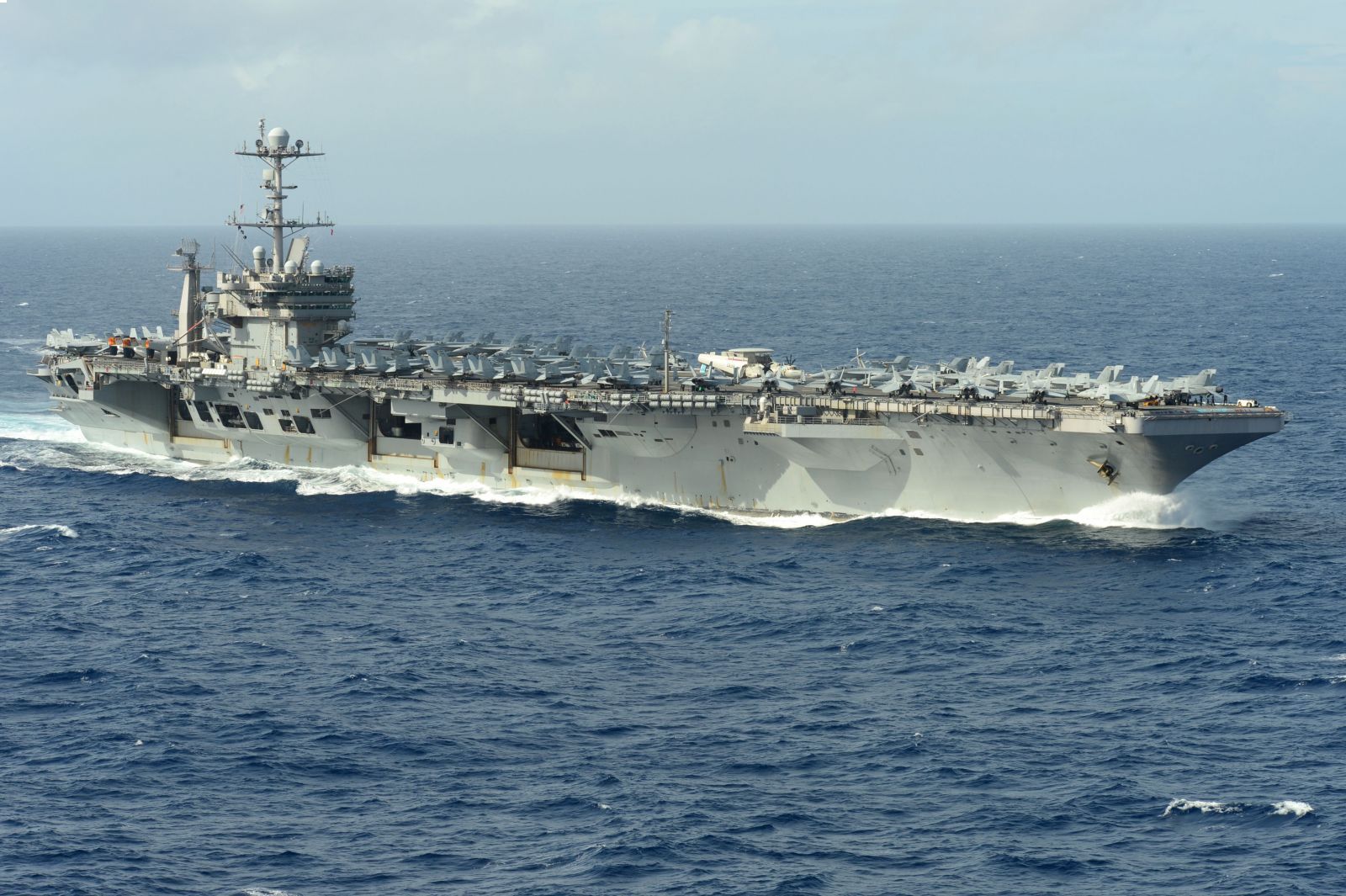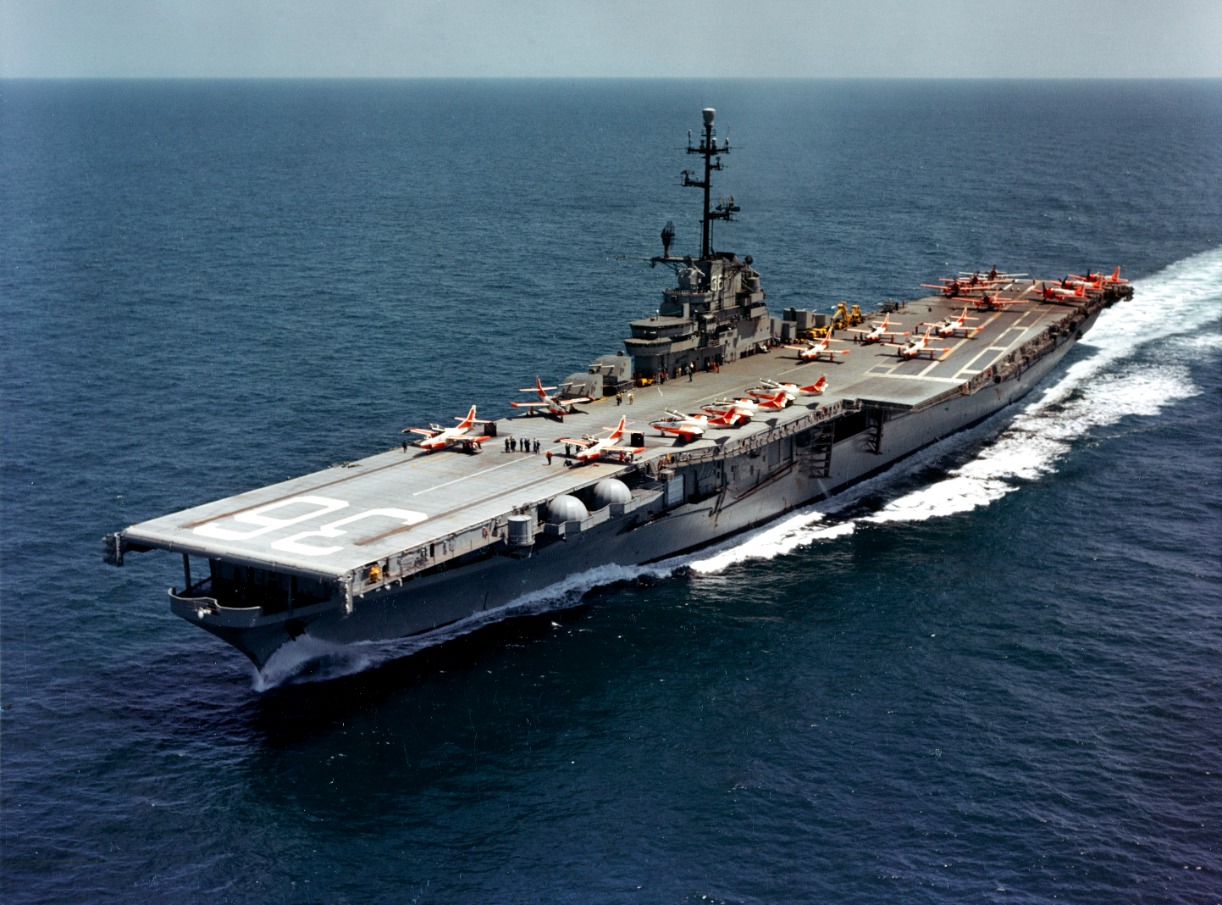Pearl Harbor Aircraft Carriers - Two crossed lines forming an 'X'. It indicates a way to end a communication or reject a notification.
A chevron home icon indicates an expandable section or menu, or sometimes previous/next navigation options. Military & Defence
Pearl Harbor Aircraft Carriers

Twitter icon A stylized bird with open mouth, tweeting. Twitter icon LinkedIn word "in". The LinkedIn Flipboard icon is a stylized letter F. Flipboard Facebook Icon Letter F. Email the Facebook icon an envelope. This indicates the possibility of sending an e-mail. Email link icon Image of a chain link. It syncs the link URL to a website. Copy the link
File:us Aircraft Carrier Pearl Harbor (7733393760).jpg
Battleship Roe as seen from a Japanese plane at the start of the attack on Pearl Harbor. The explosion in the center is the torpedo explosion of the USS West Virginia. Imperial Japanese Navy / United States Navy
At 7:48 a.m. on December 7, 1941, 183 Japanese fighter planes, dive bombers, and torpedo bombers landed at the United States Navy's Pacific Fleet base in Pearl Harbor, Hawaii. They attacked air bases and warships with bombs and torpedoes, causing massive damage.
Just over an hour later, a second wave of 167 aircraft arrived, wreaking further havoc before returning to six Japanese aircraft carriers 240 miles off the coast of Hawaii.
By the time the smoke cleared, the damage was obvious. Eight battleships of the Pacific Fleet were sunk or heavily damaged by the Japanese at the cost of 29 aircraft and five mini-submarines. Three cruisers, three destroyers and several other ships were badly damaged.
Pearl Harbor Terms To Know
188 American aircraft were destroyed and 157 damaged. The attack cost 2,335 US soldiers killed and 1,143 wounded, and 68 civilians killed and 34 wounded. The Japanese lost 129 soldiers and one U-boat crewman was captured.
This was a setback for the US Navy. But all is not lost. Fortunately, all three Pacific Fleet carriers were on duty and survived the attack.
A Japanese Navy Mitsubishi A6M2 "Zero" fighter aboard the aircraft carrier Akagi during the Pearl Harbor mission. Imperial Japanese Navy / United States Navy

Although the attack on Pearl Harbor was a complete surprise, the United States had long believed that war with Japan was a realistic possibility. Japan's actions in China and Southeast Asia provoked a severe diplomatic response, with the United States imposing sanctions on Japan and freezing its assets.
Uss Ticonderoga At Pearl Harbor, Hawaii
America also prepared the army. The Pacific Fleet moved from its original base at San Diego to Pearl Harbor in April 1940 as the United States strengthened and strengthened the defenses of its Pacific territories.
Official messages sent to Pearl Harbor commanders on November 27 warned that "this dispatch should be taken as a warning of war" and that "Japanese aggressive action is expected in the coming days."
Four - Ranger, Yorktown, Hornet and Wasp - were stationed on the east coast, ready to deal with the German U-boats, which had already caused several incidents. Three of the Pacific Fleet's carriers, Enterprise, Lexington, and Saratoga, were used to support reinforcement efforts in the Pacific.
Enterprise was the closest US aircraft carrier to Pearl Harbor on 7 December and effectively aided in its defense.
Abraham Lincoln Aircraft Carrier And Usns Arctic In Pearl Harbor, Oahu, Hawaii, Usa Editorial Stock Image
She departed Pearl Harbor on 28 November escorted by three heavy cruisers and nine destroyers on a mission to ferry 12 Marine Corps F4F-3 Wildcat fighters to Wake Island. Completing the mission on December 4, he was returning to Pearl, scheduled to return on December 6, but was delayed by bad weather.
On the morning of the attack, Enterprise was 215 miles west of Oahu. While sailing for Pearl, he sent 18 SBD Dauntless dive bombers on patrol. The dive bombers were supposed to land on Hawaii before the carrier arrived, but accidentally ran into the middle of the first wave of Japanese attacks.
Dive bombers soon joined the battle. Seven were shot down by Japanese or friendly fire, leaving eight pilots and crew killed and two wounded. At least one Zero was shot down by one of Enterprise's planes.

After the attack, Enterprise was ordered to send a strike force to locate and destroy Japanese carriers that the Navy mistook for south of Oahu.
File:us Navy 091013 N 1635s 006 Sailors Aboard The Aircraft Carrier Uss Ronald Reagan (cvn
Unable to locate the carriers, the dive bombers returned to Enterprise and the fighters flew to Pearl Harbor, where some were shot down by friendly fire.
Like Enterprise, Lexington delivered planes to an American base in the Pacific. The carrier and her escort of three heavy cruisers and five destroyers departed for Midway on 5 December to deliver 18 Marine Corps SB2U Vindicator dive bombers.
On the morning of the attack, Lexington was 500 miles southeast of Midway but was ordered back when the attack began.
Lexington ordered a search for the Japanese fleet southwest of Hawaii. Unable to locate the Japanese and running low on fuel, Lexington returned to Pearl Harbor, arriving on 13 December.
Pearl Harbor 2020
Saratoga was in San Diego on the day of the attack, having arrived from the Puget Sound Navy Yard, where she underwent an eight-month refit.
Saratoga arrived in San Diego to receive an air wing trained in Southern California. The carrier was to pick up a Marine Corps air squadron and other aircraft for delivery to Pearl Harbor.
The day after the attack, Saratoga became the flagship of Carrier Division One and sailed for Pearl Harbor on 15 December.

USS Navy Douglas SBD-3, USS Enterprise (CV-6), foreground, USS Saratoga (CV-3) near Guadalcanal on December 19, 1942. US Navy
The U.s. Navy Aircraft Carrier Uss Yorktown (cv 5) In Dry Dock No. 1 At The Pearl Harbor Naval Shipyard, 29 May 1942, Receiving Urgent Repairs For Damage Received In The Battle Of
After some debate, they decided that the prospect of destroying eight battleships of the US Pacific Fleet—considered a dominant naval weapon at the time—was too good an opportunity to pass up.
But the war in the Pacific would show that the aircraft carrier was king of the seas. American aircraft carriers played a decisive role in the Battles of the Coral Sea and Midway, and proved to be a decisive factor in some of the most important naval battles of the war.
Transporters became so important that America invested huge resources in their construction. By the end of the war, the United States had 28 carriers and 71 smaller escort carriers. Hiryū (飛龍, "Flying Dragon") was an aircraft carrier built for the Imperial Japanese Navy (IJN) in the 1930s. Generally considered the only ship of her class to be built to a modified Sōryū design.
Her aircraft supported the Japanese occupation of French Indochina in mid-1940. They participated in the attack on Pearl Harbor and the Battle of Wake Island. During the early months of the Pacific War, the fleet supported the occupation of the Dutch East Indies in January 1942. The following month, her aircraft bombed Darwin, Australia, and the Dutch continued in the East Indies campaign. In April, Hiryu's aircraft helped sink two British heavy cruisers and several merchant ships during raids in the Indian Ocean.
Disaster: What If America's Aircraft Carriers Died At Pearl Harbor?
After a brief refit, Hiryu and three other First Air Fleet (Kido Butai) carriers took part in the Battle of Midway in June 1942. After bombarding American forces on the atoll, planes from Midway and the aircraft carrier USS Terprise attacked the carriers. Hornet and Yorktown. Dive bombers from Yorktown and Terprise crippled Hiryu and set it on fire. The next day, when it became clear that she could not be saved, she collapsed. The loss of Hiryu and three other IJN carriers at Midway was a decisive strategic defeat for Japan and contributed significantly to the eventual Allied victory in the Pacific.
Hiryu was one of two major carriers approved for construction under the 1931-32 supplementary program. Originally designed as a sister ship to Sōryu, her design was expanded and modified in light of events at Tomozuru and the Fourth Fleet in 1934–1935, which revealed that many IJN ships were too heavy, unstable, and structurally weak. Raises her prophecy and strengthens her back. Other changes include increasing its radius, movement, and armor protection.
The ship had an overall length of 227.4 meters (746 ft 1 in), a beam of 22.3 meters (73 ft 2 in) and a draft of 7.8 meters (25 ft 7 in). She displaced 17,600 metric tons (17,300 long tons) at normal load and 20,570 metric tons (20,250 long tons) at normal load. Her crew consisted of 1,100 officers and enlisted M.

Hiriu was equipped with four sets of geared steam turbines of 153,000 horsepower (114,000 kW), each driving a propeller shaft, using steam supplied by eight compound water-tube boilers.
The Truth Behind The Aircraft Carriers Photo
The turbines and boilers were the same as those used on the Mogami-class cruisers. The power of the sail and her slender cruiser-like hull with a 10:1 length to beam ratio gave her a speed of 34.3 knots (63.5 km/h; 39.5 mph).
Hiryu carried 4,500 metric tons (4,400 long tons) of fuel oil, giving her a range of 10,330 nautical miles (19,130 km; 11,890 mi) at 18 knots (33 km/h; 21 mph). The boiler intakes were connected to the starboard side of the ship and exhausted.
Japanese aircraft carriers ww2 pearl harbor, aircraft carriers, pearl harbour aircraft carriers, pearl harbor japanese carriers, pearl harbor carriers, pearl harbor japanese aircraft carriers, pearl harbor aircraft, aircraft carriers pearl harbor, aircraft carriers at pearl harbor, japanese aircraft pearl harbor, where were the aircraft carriers during pearl harbor, aircraft carriers at pearl harbor 1941
0 Comments